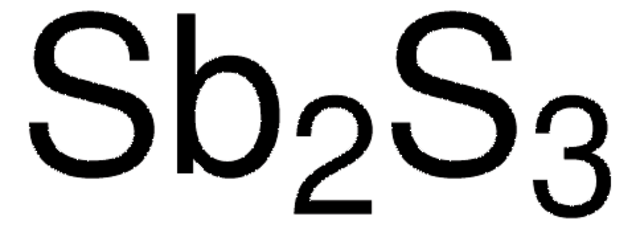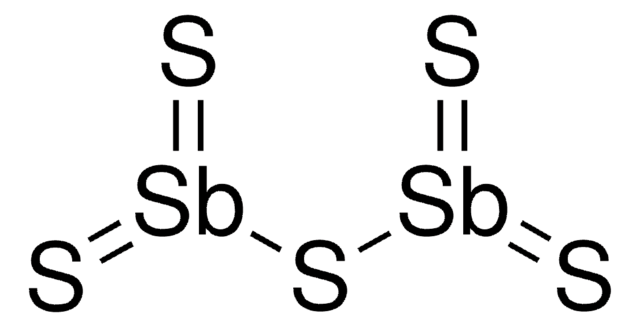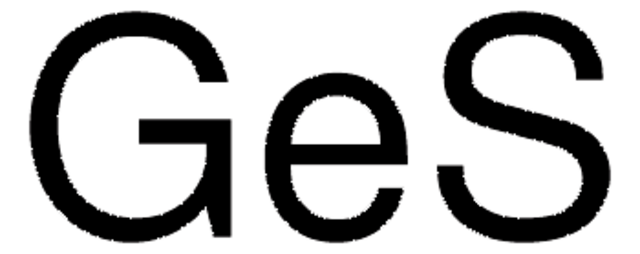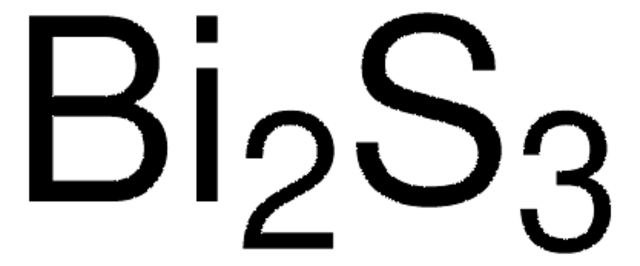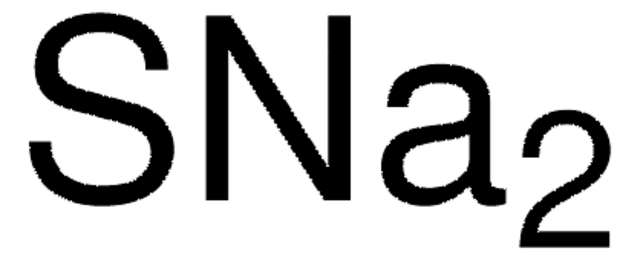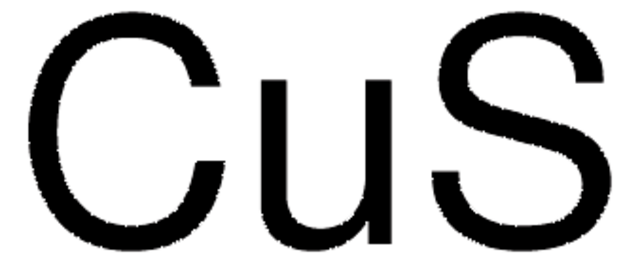229466
Antimony(III) sulfide
99.995% trace metals basis
About This Item
Productos recomendados
Quality Level
assay
99.995% trace metals basis
mp
550 °C (lit.)
density
4.64 g/mL at 25 °C (lit.)
SMILES string
S=[Sb]S[Sb]=S
InChI
1S/3S.2Sb
InChI key
IHBMMJGTJFPEQY-UHFFFAOYSA-N
¿Está buscando productos similares? Visita Guía de comparación de productos
Categorías relacionadas
General description
Application
- Thermal decomposition of tris(O-ethyldithiocarbonato)-antimony(III): A single-source precursor for antimony sulfide thin films, important for developing materials with specific optical properties (Eensalu et al., 2022).
- Antimony sulfide as a light absorber in highly ordered, coaxial nanocylindrical arrays: Discusses the integration of antimony sulfide into photovoltaic devices, significant for chemists interested in renewable energy solutions (Wu et al., 2015).
- Syntheses and characterization of one-dimensional alkali metal antimony (III) thiostannates: Explores novel antimony(III) sulfide compounds for potential use in electronic and photonic devices (Yohannan and Vidyasagar, 2015).
- Antimony (III) speciation in hydrosulfide solutions: Provides insights into the geochemical behavior of antimony sulfide complexes, important for environmental chemists and academia studying heavy metal cycling (Olsen et al., 2019).
signalword
Warning
hcodes
Hazard Classifications
Aquatic Chronic 3 - Carc. 2 - STOT RE 2
target_organs
Lungs
Storage Class
6.1C - Combustible acute toxic Cat.3 / toxic compounds or compounds which causing chronic effects
wgk_germany
WGK 2
flash_point_f
Not applicable
flash_point_c
Not applicable
ppe
dust mask type N95 (US), Eyeshields, Gloves
Elija entre una de las versiones más recientes:
¿Ya tiene este producto?
Encuentre la documentación para los productos que ha comprado recientemente en la Biblioteca de documentos.
Los clientes también vieron
Nuestro equipo de científicos tiene experiencia en todas las áreas de investigación: Ciencias de la vida, Ciencia de los materiales, Síntesis química, Cromatografía, Analítica y muchas otras.
Póngase en contacto con el Servicio técnico